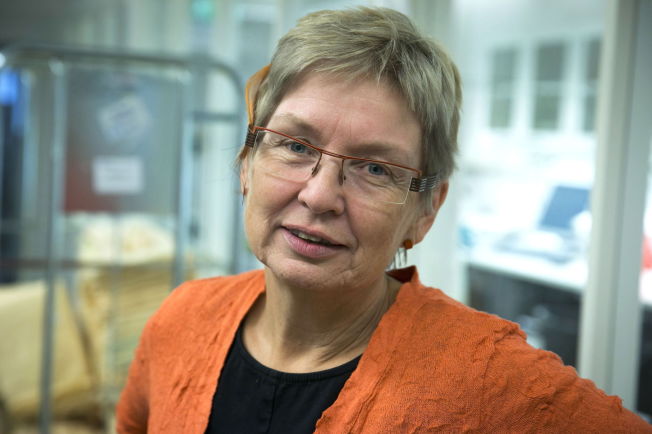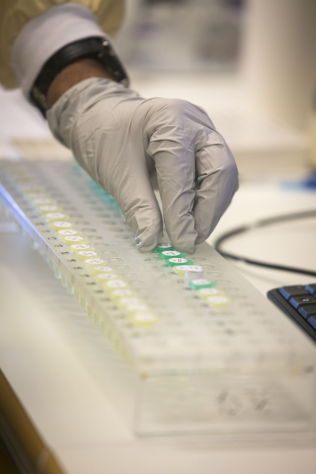New and improved DNA technology can solve old crimes, but it does not necessarily easier.
– For improved analysis technologies increases sensitivity, but with increased sensitivity also increases the uncertainty of the outcome is relevant deed, explains director Bente Mevåg at the NIPH.
VG seen on the 32 unsolved murder cases in Norway from the last 25 years. In several of these police have stated that they regularly have sent old material into new analysis because technology in this area has improved. It is not certain that the police should be overly optimistic to get breakthrough in the cases.
– When you get increased sensitivity can examine fewer cells. The challenge is then to link these cells to the crime. The requirements for all steps in the process – securing, processing, storage and analysis – will be stricter in line with the technology improves. One must brief avoid contaminating the samples with non-deed relevant cells from oneself, from the environment or from other samples, explains Mevåg.
Attorney: – Too many unsolved murders

Just what is a danger that can happen in many ways. For example, one with the cells at the scene before the crime took place, cells that have come your after action, but before track fuse cells that were administered during the actual track fuse, or you can even add cells in the laboratory, if the procedures for processing the samples are not good enough.
Still, in a laboratory more controlled environment than what one has the opportunity to have out in the field, at a crime scene.
Varying routines
Department Director at the Division of Forensic Sciences in Public Health also pointed another challenge by the use of DNA to solve old crimes; The once took one perhaps not the main precautions with the work at the scene as methods today require that one did.
– We did not know at the time that one must work as carefully as we today know that you have. One must facilitate to exploit biological traces at some point in the future, says Mevåg.

She says it is a problem that not systematized treatment and storage of evidence. Mevåg gets support of former puritans investigator John Chr. Grøttum:
– It is variably how good the individual police districts are to take care of such things. And it can be crucial when to watch old criminal cases. At one time or another, you can get information which makes that one is dependent on having old material as possible to study, says Grøttum.
RESEARCH: – Norwegian investigators need national “murder manual”
It is known that DNA from cells can spill over from one object to another. This may happen if things are not stored in a proper manner. Therefore it is important routines that makes one minimizes such transfer opportunities. Without good practices can potentially get a situation where several years later makes new analyzes with new technology, and suddenly a murder weapon find DNA from a person who was not there initially. It may lead to the wrong person to be suspected of a murder.
Without good routines for storing evidence can also get a situation where you have no control on who at different times has handled the material.
Report
CEO by Gena, a private institute for DNA analysis in Stavanger, Ragne Kristin farm is agreed that the procedures for taking care of evidence must be improved. She shows including the UK has a law that makes so long as a person is in prison, nothing is discarded.
– Then you can raise issues again. In Norway it is very casual. We have concrete examples of this are difficult, because the material does not exist anymore, says The farm and mention Viggo Kristiansen, who several times has been attempted resumed the «Baneheia» -saken, as one such example.
READ ALSO: Therefore no cases solved
In 2009, delivered a range a report to the Police Directorate (POD ) where the importance of this with good routines for storage was pointed. Still has thus six years after not introduced common procedures for this throughout police Norway. Now says POD VG that they have initiated a project aimed at raising the quality of the police investigation.
– In this work, various reports form an important work basis, says section manager Astrid Birgitte Borge.
Borge also explains that in connection with unsolved criminal cases the police can keep the biological trace material as long as it’s appropriate.
Monika case
Recently, a working group appointed by the Director of Public Prosecutions submit a report after the much talked Monika case in Hordaland. Where it was pointed out other challenges in relation to DNA in so-called “cold case” -saker. One of these was that there is limitations in taking care of DNA profiles one has collected from people in connection with specific criminal cases. Some work group believes “may create challenges for resumptions and” cold case “-saker.”
It is because one must get permission to take new samples of actual people.
BIG VG SPECIAL: 32 unsolved murder

DEATH: Monika Sviglinskaja (8) (picture) was found dead home in the apartment at Sotra under mysterious circumstances three years ago.
Photo: PRIVATE , VG
This was the case in Monika case. When this was taken up again have to again ask the man who is now indicted in the case that he might take DNA samples from him. He agreed, but he was therefore not obliged to do so long as he was not already indicted in the case.
In Monika case should the DNA traces that existed from evidence actually been deleted, as the case per definition was closed and solved by the police. This was anyway – by chance – never done. Had you done that would have been unavailable for further investigation when the matter was taken up again.
The Working Group therefore proposes “that this change so that the choice of a dismissal grounds, should not be decisive in determining whether significant evidence is present when the case may later be resumed. It is believed that this will match the assessments made in relation to any creation of device that will work with unsolved serious matters (Cold cases). “
Touch Track
Although new technology creates new challenges will still, in many cases could get answers today, which one could not get before. It is Ragne Kristin Farmen by Gena convinced.
– New technology can obviously find old contamination of tracks, but the use of what we call low-level analysis allows one to a greater extent can investigate touch track, as skin cells, compared earlier, says The Farm.
Such traces are less DNA than bag-based, such as blood, saliva and sædflekker. Low-level analysis also provides the ability to get results from handbags in very small amounts.
– For example, a small drop of blood on a garment. Maybe they found nothing from the drop earlier, but now one can manage it, explaining Farmen.
TI FAMILY MEMBERS IN unsolved MATTERS: – JOIN NOW!

Future
Gena- manager believes developments in DNA technology will be continuous, on the grounds that the more knowledge we get the more we understand that we do not understand. She believes inter alia that in the future will be able to say more about when a track was deposited, which will be very useful to police.
– I also think one can find several properties via DNA. One can see personal traits as eye color and complexion. This is complex, but you have already come a piece. When one succeeds in this, one can use DNA to describe not only identify, says The Farm.
She illustrates with Pocket Mann case as an example:
– There were hundreds inside to questioning. It was guaranteed uncomfortable for many. Had for example been able to see what color the perpetrator had the eyes, one could have eliminated many of those who were questioning. It is a type of technology I think the police would be interested in.
No comments:
Post a Comment